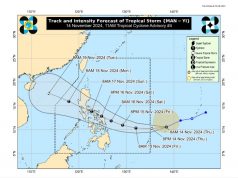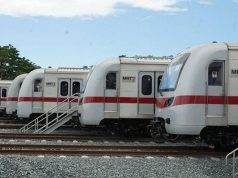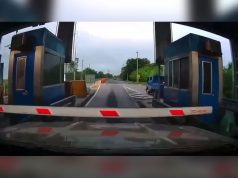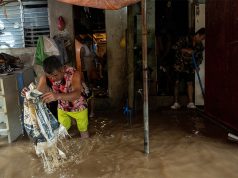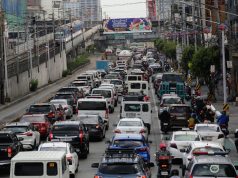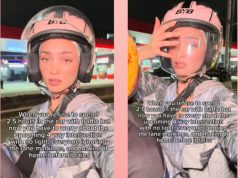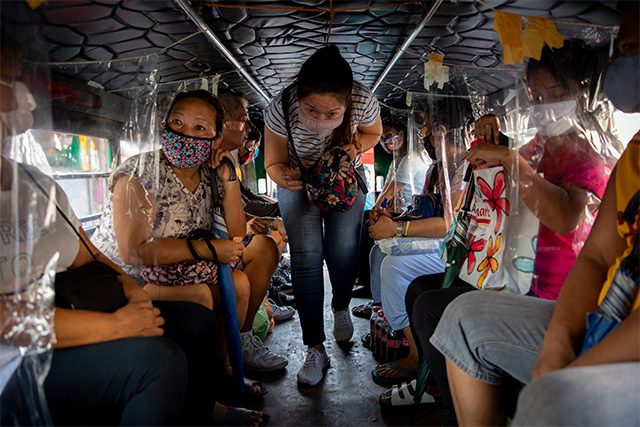
(Updated Nov. 4, 2021; 11:57 a.m.) The costs for putting up the plastic barriers in jeepneys despite them not being science-backed were brought up online after the transport agency allowed their removal.
The Department of Transportation on October 30 announced that jeepneys and buses in Metro Manila can operate with an increased seating capacity of 70% starting on November 4.
This will include all public road-based and rail transportation vehicles.
The Inter-Agency Task Force for the Management of Emerging Infectious Diseases (IATF-EID) approved this recommendation on September 28.
Alert Level 3 classification in Metro Manila was also extended until November 14.
“Noong nag-meeting ang IATF, na-determina nila na karamihan po ng ating mga mamamayan na pumapasok din sa NCR ay nanggagaling sa mga karatig probinsya natin, kaya minarapat po ng IATF na isama na rin po ‘yung mga karatig probinsya natin na nasa MUCEP area,” DOTr Undersecretary for Administrative Artemio Tuazon said.
MUCEP or the Update and Capacity Enhancement Project covers the provinces of Bulacan, Rizal, Cavite, and Laguna, according to DOTr.
Mark Steve Pastor, DOTr assistant secretary for Road Transport and Infrastructure, also stated that they had approved the removal of the plastic barriers in these vehicles.
Drivers and operators installed them in July 2020 to implement the 50% capacity rule for public utility vehicles.
Pastor admitted the lack of scientific proof on the plastic barrier’s effectiveness in preventing COVID-19 even after more than a year that doctors had been calling them out for it.
“Drivers and operators can already remove them because there are no medical findings, based on our studies, that they can prevent the spread of COVID-19. Instead, the virus could stick to them,” he said.
DOTr also reminded the public that the mandated minimum health protocols should still be strictly implemented when riding PUVs.
On installation of plastic dividers
While not an official policy, Transportation Assistant Secretary Goddes Hope Libiran previously urged PUV drivers to install plastic barriers or use UV light as added COVID-19 prevention.
“At meron pong option ‘yan na payagang magkakatabi ang mga pasahero basta’t merong plastic barrier sa kanilang pagitan o di kaya gagamit sila ng UV light para sa disinfection,” she said in an interview last October 2020.
In a message to Interaksyon on Wednesday, Libiran stressed that the DOTr did not issue any policy that required PUV drivers to install the dividers in their vehicles.
“It was neither DOTr nor Secretary Art Tugade that required PUVs to install plastic barriers in between passengers in PUVs,” the transport official said.
“Our guidelines issued in April last year said that non-permeable plastic barriers must be installed to separate the driver from its passengers,” she added.
She stated that the installation of barriers was an initiative of the drivers themselves.
The official further said that the previous condition to allow passengers to sit beside each other did not come from her or the DOTr.
“Hindi ko po sinabi ‘yon as a policy of DOTr. Even in our previous press releases on the matter, we mentioned that such was decided upon by the Cabinet, upon the recommendations of the economic team,” Libiran said, referring to her October 2020 interview.
The transport exec cited that in October last year, presidential spokesman Harry Roque announced that the Cabinet approved the recommendation of the Economic Development Team to increase public transport capacity by letting riders take one seat apart.
“He said the recommendations came from President Rodrigo Duterte’s economic team, whose members have long said that limited public transport has been holding back economic recovery after months of community quarantine rules due to the COVID-19 crisis.” Libiran said.
She added that the Palace official then said that the new rules would “no longer need a separate approval from the Inter-Agency Task Force for the Management of Emerging Infectious Diseases.”
“He also announced that ‘passengers may eventually be allowed to sit beside each other provided that there are plastic barriers separating them. If barriers are not available, the use of UV light for disinfection is also allowed,” the DOTr assistant secretary said.
Wasted money, resources
Some Filipinos criticized the DOTr for not listening to medical experts before, therefore leading to wasted resources in public transport.
“Ganun ganun na lang ano? Ang kawawa palagi, ang nawalan, ang mga jeepney drivers. Iyan ang nangyayari kapag ang gobyerno ay hindi marunong makinig sa mga eksperto. Matagal na sinasabi na ang solusyon ay ventilation at hindi mga harang na ganyan,” historian Kristoffer Pasion said.
“Ang driver na naman at operator ang nagsayang ng pera sa kautusang hindi pinag-aralan bago ipatupad. Samantala, ang nag-utos, hindi nabutas ang bulsa,” another Twitter user said.
A Twitter user also provided an estimated computation of how much the plastic barrier cost per jeepney.
Bigyan ko kayo computation ha?
Plastic cover – P120.00/yard (6 yards ang need sa bawat jeep)
Nylon – P210
————
TOTAL: P930~930 pesos ang ginastos ng mga drivers sa UP para makagawa ng barrier dahil sabi mandatory tapos hindi pala backed by science? https://t.co/928YHUST9M
— Mariel #NoToJeepneyPhaseout (@mariellll__) October 31, 2021
Others are hopeful that PUV drivers would receive reimbursement for their wasted money.
“Sana ma-reimburse ng gobyerno since sila naman ang nagrequire,” one Twitter user said.
“So much money wasted on something that’s not even backed by science omg where’s the apology and compensation?” another user wrote.
Statistician Peter Cayton, meanwhile, suggested that other materials can be installed to observe physical distancing in PUVs.
“Again, make distancing and ventilation work at the same time. Hindi naman talaga kinailangan ng plastic, kahit nakadikit na mga kahon pangharang para irespeto ang distansiya sapat na,” Cayton said.
What experts said
Philippine College of Physicians president Dr. Maricar Limpin explained in a previous interview how plastic can cause COVID-19 infection instead of preventing it.
“Alisin na ho natin ‘yan kasi yung virus kung dumikit pa nga ho dun sa plastic, tapos mahawakan ho natin, tapos mailagay ho natin sa ilong e ‘di parang mabilisan din ho nating nalanghap yung virus at pwede ho tayong magkaroon kaagad nung infection,” the doctor said.
“’Yan nga yung palagi naming sinasabi maski noon pa, na yung mga nakikita nating ginagawa sa mga pampublikong sasakyan, yung punuan na na wala namang distansya na, hindi ho natin gusto yan kaya…tingnan ho ninyo, mabilis na nag-surge uli tayo,” she added.
Moreover, early this year, some foreign experts have also shared studies that showed dividers made of Plexiglas and other plastic materials can impede proper ventilation, thus ineffective in preventing COVID-19.
READ: ‘It does nothing’: Experts say plastic dividers do not help in COVID-19 prevention




